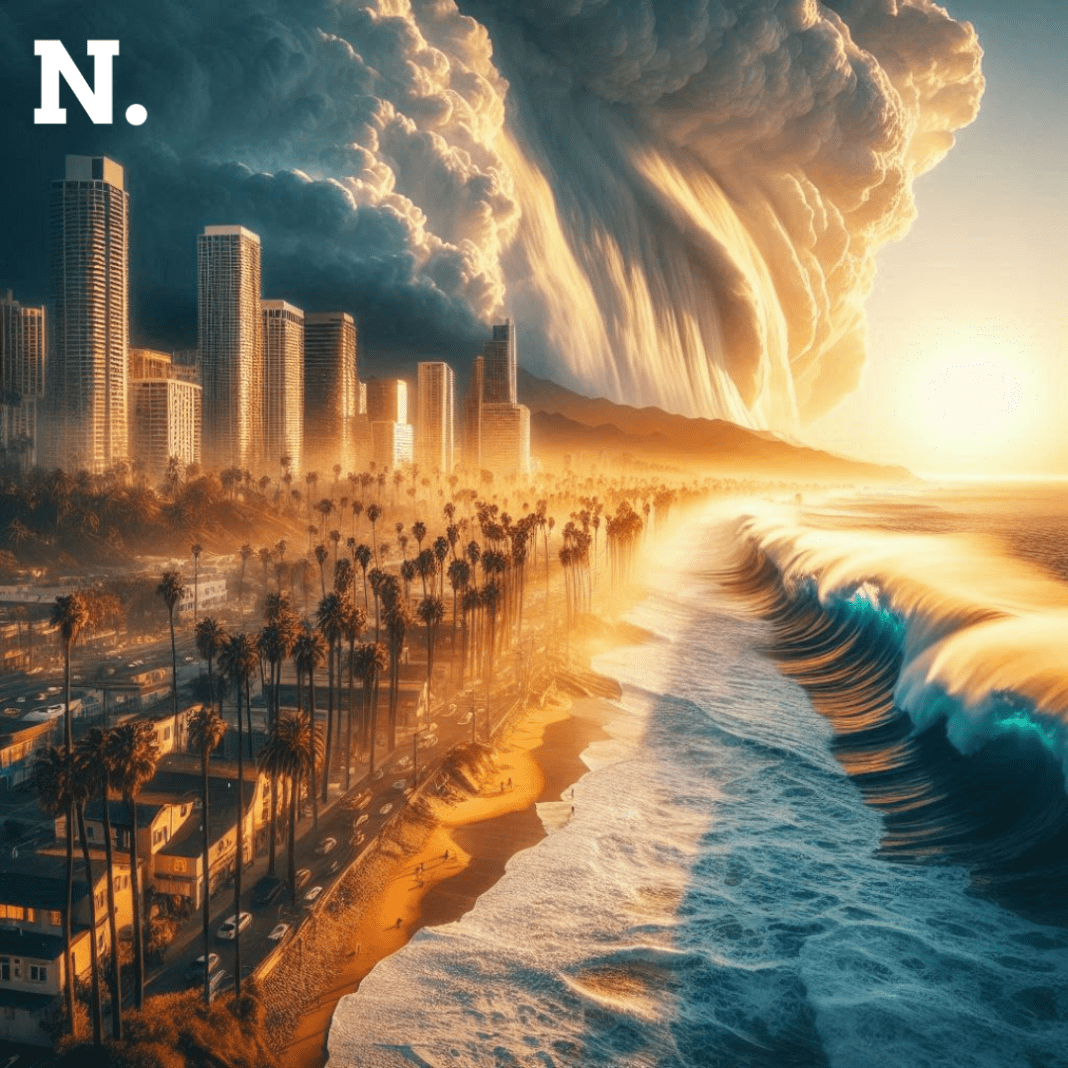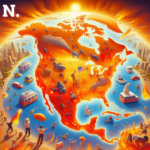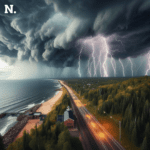The pacific Northwest of the united States particularly the coastal regions of Washington oregon and Northern California stands at the highest risk for devastating tsunami This alarming vulnerability stems from the geological characteristics of the Cascadia subduction Zone CSZ), a 700-mile fault line stretching from Northern California to Vancouver Island in Canada. Experts warn that this region is overdue for a massive earthquake and subsequent tsunami, which could have catastrophic consequences for the densely populated coastal areas.
Understanding the CSZ Tsunami
The CSZ is where the Juan de Fuca Plate is being forced underneath the North American Plate. This process, known as subduction, creates significant geological pressure. Historically, the CSZ has produced some of the largest earthquakes in North America. A massive tsunami, triggered by a last major earthquake of magnitude 9.0 that occurred in 1700 along this fault, reached the shores of Japan. Geological evidence suggests that these megaquakes occur approximately every 300 to 600 years, putting the region at significant risk today.
The Science Behind Tsunami Formation
Tsunamis in the US, particularly along the Pacific coast, are primarily generated by submarine earthquakes. When tectonic plates beneath the ocean floor suddenly shift. They can release enormous amounts of energy, displacing water and initiating the formation of tsunami waves. The Pacific Plate’s interactions with the North American Plate and the Juan de Fuca Plate along the Cascadia Subduction Zone, as well as the Pacific Plate’s interactions with the smaller plates in the western Pacific, are significant contributors to seismic activity in the region.
Volcanic eruptions, especially those occurring in the Pacific Ocean’s volcanic arcs, can also trigger tsunamis. When an underwater volcanic eruption takes place, it can displace water and create powerful waves. Additionally, underwater landslides. Whether caused by seismic activity, volcanic eruptions, or other factors, can result in the sudden displacement of large volumes of water, generating tsunami waves that can travel across the ocean and impact the US coastline. Understanding these geological processes is crucial for tsunami detection, warning systems, and coastal preparedness measures.
Potential Impact on the Pacific Northwest*
The potential impact of a CSZ-induced tsunami on the Pacific Northwest is staggering. Coastal cities like Seattle, Portland, and smaller towns along the coastline are highly vulnerable. A tsunami of this magnitude could inundate low-lying areas, causing widespread destruction of property, infrastructure, and potentially significant loss of life. The economic impact would be profound, with estimates suggesting that damages could run into the hundreds of billions of dollars.
In addition to immediate destruction, the region would face long-term challenges in recovery and rebuilding. Critical infrastructure, including roads, bridges, and utilities, would be severely affected, complicating rescue and relief efforts. The psychological impact on residents who survive such a disaster cannot be underestimated, as communities would grapple with loss and the daunting task of rebuilding their lives.
Preparedness and Mitigation Efforts
Given the high risk, preparedness and mitigation efforts are crucial. Local and state governments, along with federal agencies like the Federal Emergency Management Agency (FEMA), have been working on various initiatives to enhance readiness for such an event. These efforts include:
Public Awareness Campaigns: Educating residents about the risks and the importance of having an emergency plan is vital. Campaigns aim to inform people about evacuation routes, emergency supplies, and the steps to take immediately following an earthquake and tsunami warning.
Infrastructure Improvements: Investing in tsunami-resistant infrastructure, such as reinforced buildings and elevated evacuation platforms, can save lives. Retrofitting existing structures to withstand seismic activity is also a priority.
Early Warning Systems: Enhancing the tsunami warning systems to provide timely alerts can significantly reduce casualties. Advances in technology have made it possible to detect tsunamis minutes after they form, giving people precious time to evacuate.
Community Drills and Simulations: Regularly conducting drills and simulations helps communities to practise and refine their response to a tsunami. These exercises are crucial for ensuring that emergency services and residents know their roles and actions during a crisis.
Challenges and future directions
Despite these efforts significant challenges remain: In rural and economically disadvantaged areas, ensuring that all residents are adequately prepared for large scale infrastructure projects can be a challenge due to limited funding.. Additionally, the unpredictability of earthquakes makes it challenging to maintain a constant state of readiness.
Moving forward collaboration between scientific communities, governments and the public is essential. Continued research into earthquake and tsunami prediction coupled with robust public policy and community engagement will play a critical role in mitigating the impact of this inevitable natural disaster
Conclusion : Tsunami Vulnerability
The Pacific Northwest’s vulnerability to a devastating tsunami is a sobering reminder of the power of natural forces and the need for power of natural forces and the need for preparedness. While the exact timing of the next CSZ earthquake remains uncertain, the steps taken today to educate, prepare and protect can significantly reduce the potential for loss of life and property. As residents of this beautiful yet precarious region understanding the risk and taking protective measures is not just prudent its essential.





